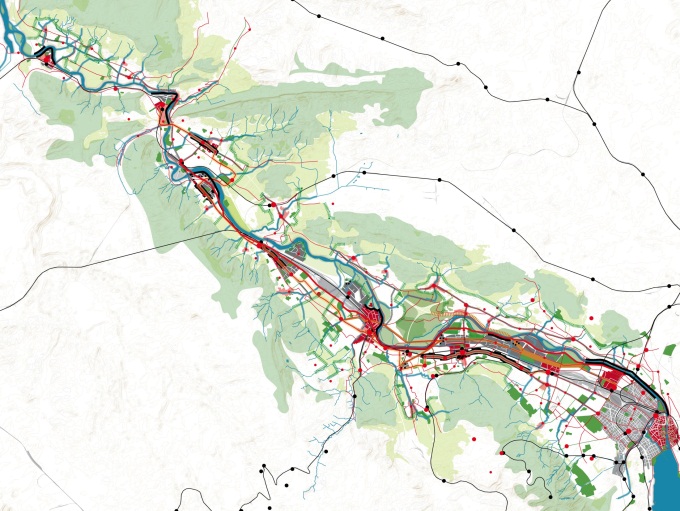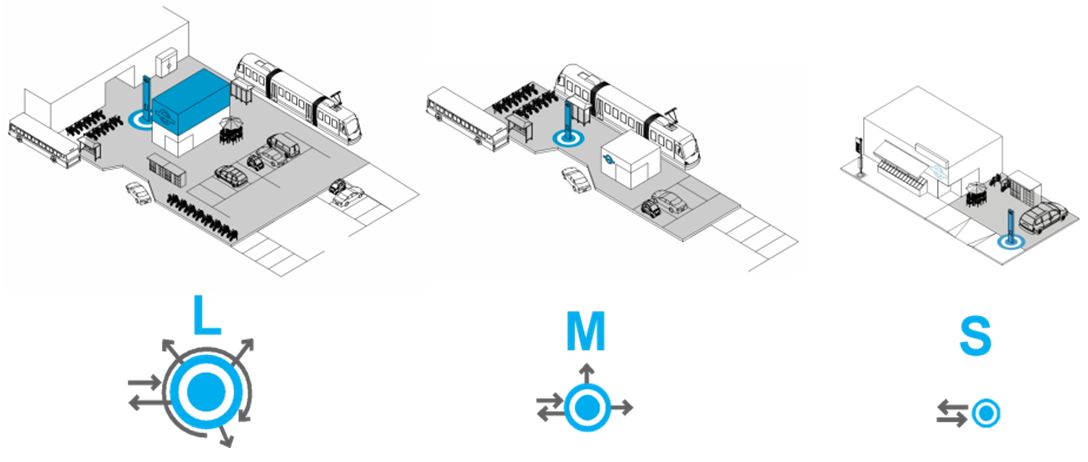International projects
Spatial Development of the Limmat Valley, Switzerland (CH)
With a population of approximately 200.000 the Limmat Valley is one of the areas of Switzerland with a high population density. To avoid negative impacts of traffic, there is an urgent need for long-term and demand-oriented approaches to spatial development. Two key concepts are the advancement of public transport and bicycle traffic as in the form of a planned tram as well as a planned bicycle highway along the Limmat River. All existing modes of transport should be integrated with new offers to provide comprehensive mobility. In order to achieve this, services like car sharing, bike sharing and local logistics will be included. Public transport can become more individual through a connection with carpooling and taxi services to form an on-demand-mobility-system. All modes of transport converge at mobility hubs which are located at public transport stations, business parks, shopping centers or even in residential districts.
null
Steering committee „Ideenkonkurrenz Perspektive Raumentwicklung Limmattal“;
Canton of Aargau, Canton of Zurich and the Swiss Federal Office for Spatial Development ARE;
Coordinated by:
Swiss Federal Institute of Technology ETH Zurich
ASTOC GmbH & Co. KG, Mavo GmbH, berchtoldkrass space&options / 2013
• Analysis of local circumstances and current trends of mobility (e.g. GIS- based analyses of reachability)
• Creating a mobility strategy within the policy of hubs and district structure
• Implementation of measures in concrete spatial areas (especially bicycle traffic, car sharing and local logistics)

